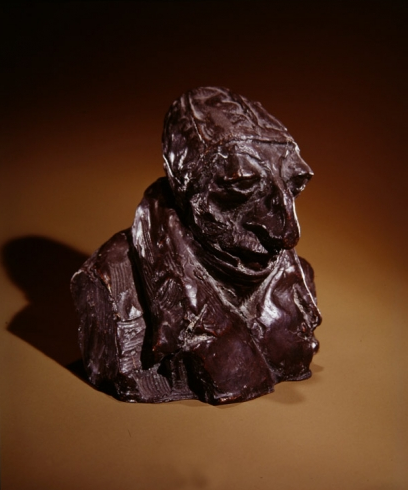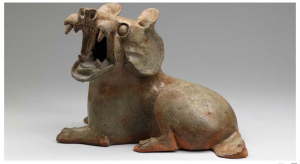
Honore-Victorin Daumier (Man with Flat Head), c.1832-35 (bronze). (1840-1917) / Hirshhorn Museum & Sculpture Garden, Washington D.C., USA / Photo © Boltin Picture Library / The Bridgeman Art Library
Next class, will will begin building our clay projects.
Today you will plan and design your sculpture.
First, Let’s study some examples.
Artists like to study heads and faces.
Some artists make sculpture to show the action or feeling in the face.
Look for lines near the eyes, nose, and mouth.
Do these lines show action or feelings? How?

Effigy Head Brazier, 500-200 B.C. Ceramic; Vessel, Unslipped ceramic, 8 1/2 in. (21.59 cm) . Los Angeles County Museum of Art.
Look at each sculpture in this post.
Study the shapes of the eyes and mouths.
Do they always have the same shape?

Gianlorenzo Bernini. Anima Dannata (Damned Soul). Rome. (circa 1619).
You can learn how to show action or feeling in a face.
Notice the shapes and lines that tell you how someone feels.
Make similar shapes and lines in your own sculpture.

-
USE YOUR iPAD to RESEARCH Animals and people. Look for shapes and lines that make people and animals show action and emotion.
-
sketch some ideas for your sculpture using similar shapes and lines. Draw 3 different views of your sculpture (front, side, Back, top or bottom).
-
make a list of forms you will need to build to create your project.
-
Color in your design using markers or color pencils.
-
Make sure your name and code are on the back.
EXTENSIONS:
WATCH THIS VIDEO TO REVIEW THE SLIP AND SCORE METHOD:
CLICK HERE IF YOU CANNOT SEE THE VIDEO!
-
make scoring or “X” marks when attaching pieces together.
-
Use slip (water and clay mixture) to put pieces together.
-
press joints together firmly.
-
check and seal the joints together.
- ETCH YOUR INITIALS INTO YOUR CLAY SCULPTURE.

